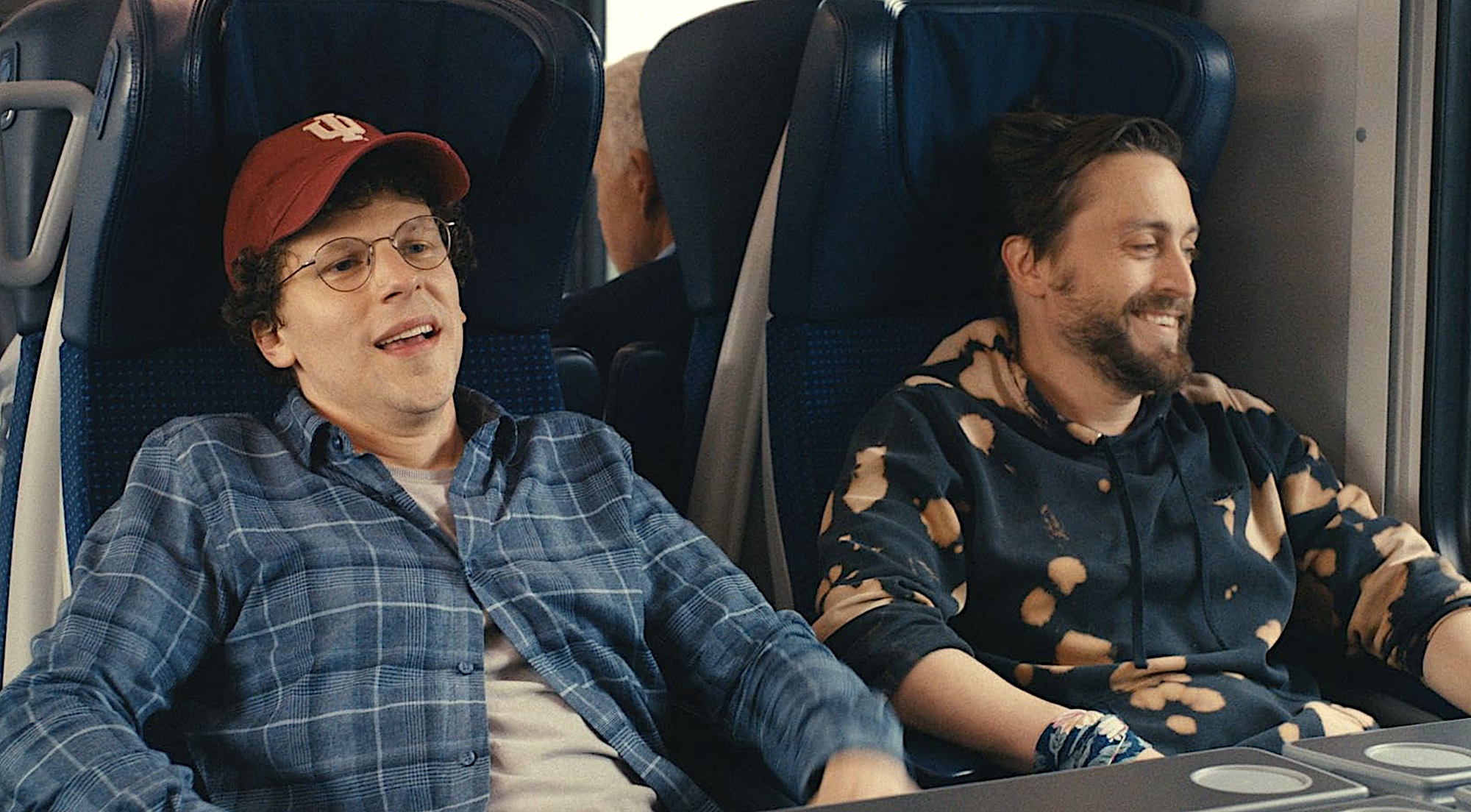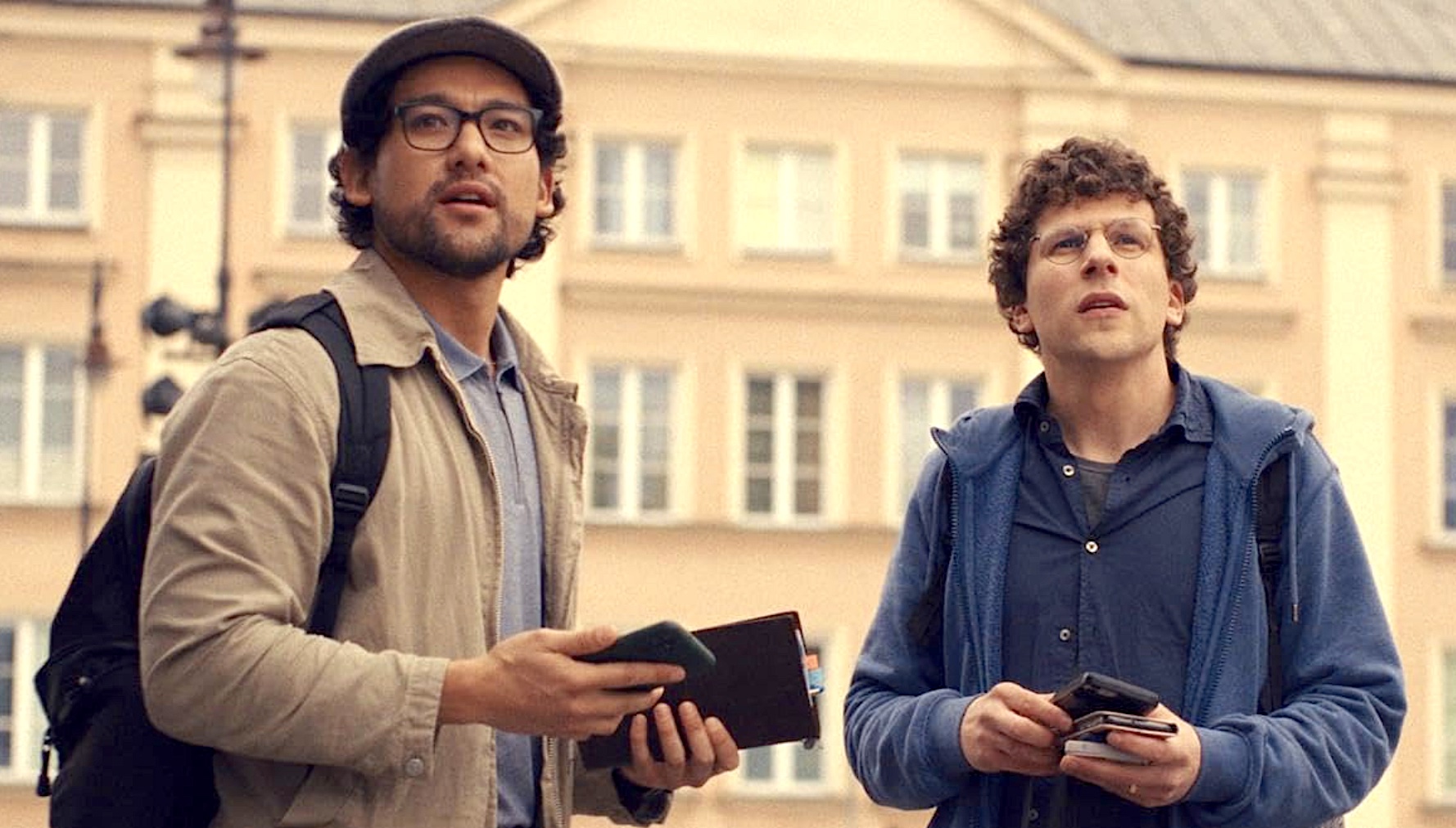Movie Reviews
‘Longlegs’ review: More creepy than scary

In 1992, The Silence of the Lambs became the first, and to this date, only horror film to win Best Picture at the Oscars. The success of Jonathan Demme’s masterpiece paved the way for not only for more instalments featuring Anthony Hopkins’ Oscar-winning turn as Hannibal Lecter, but more serial killer chillers that hope to grab the Academy’s attention. Not even David Fincher with his excellent slew of serial killer movies like Seven and Zodiac bagged a single nomination. Considering the influence of The Silence of the Lambs towards Longlegs, it is unlikely that Osgood Perkins’ latest feature is going to an Oscar contender, but that is not a bad thing.
Being no stranger to horror as he previously directed The Blackcoat’s Daughter and Netflix’s I Am the Pretty Thing That Lives in the House, as well as being the son of Psycho star Anthony Perkins, it is a genre that Osgood Perkins can’t seem to let go of, with the hope of mainstream attention. And with Longlegs, which features Nicolas Cage as the titular creeper, that is sure to get the notice of someone. The film centers on Lee Harker (Maika Monroe), an up-and-coming FBI agent who uncovers a series of occult clues that she must solve to apprehend a serial killer who simply goes by “Longlegs”.
From those aforementioned serial killer movies, you can see the influence here, even during a couple of scenes where Agent Harker deciphering Longlegs’ cryptic letters that are left at the scene of the crime. During the course of the investigation, it is implied that the killings are based on some form of Satanism, which is a well-worn trope in the horror genre. On paper, Longlegs has the ingredients for something that is overly familiar with horror films, and yet where it succeeds is in the execution.
The film is drenched in its unnerving atmosphere where you feel the isolation that the FBI agents go through when they walk through mundane houses where murder has (or is about) to occur. Along with Andrés Arochi’s striking cinematography, Zilgi’s atmospheric score and the impressive sound design get under your skin. Whilst you may feel a sense of uncertainty, Longlegs isn’t particularly scary as there are moments where humor comes out of nowhere, which some may find this tonally confusing, but the performances compliment it.
By this point, Nicolas Cage has become an over-the-top should be a meme, whether or not he understands that himself. However, Cage is having a lot of fun playing the eponymous antagonist, in which he is covered pale-white makeup to the point he looks unrecognizable. Sure, there are cases where you see that Cage insanity, but he immerses himself in a role that is closer to a classic horror monster performance which appropriately doesn’t fit into normal society.
Considering Cage’s showy presence which could have overshadowed everything else, the film, along with its promotion, never loses sight who our hero is. Having proved herself as a horror icon in 2015’s It Follows, Maika Monroe has the star-power to rival Jodie Foster with a deadpan performance that serves as a counter-balance to Cage’s turn. With the film being about Harker going deeper into this case, as well as looking back at her own past, it is captivating seeing Monroe trying to maintain her composure, looking like she is about to break. As much the film somewhat loses its ambiguity towards the end by giving us the big scene that explains it all, Maika Monroe dominates from start to finish.
Join the AIPT Patreon
Want to take our relationship to the next level? Become a patron today to gain access to exclusive perks, such as:
- ❌ Remove all ads on the website
- 💬 Join our Discord community, where we chat about the latest news and releases from everything we cover on AIPT
- 📗 Access to our monthly book club
- 📦 Get a physical trade paperback shipped to you every month
- 💥 And more!

Movie Reviews
Movie Review: Robbie Williams has always lived to entertain. In ‘Better Man,’ he’s still doing it

“I came out of the womb with jazz hands,” pop star Robbie Williams recounts in “Better Man,” his new biopic. “Which was very painful for my mum.”
Badum Dum.
But also: Wow. What an image, to illustrate a man who, we learn, agonized from early childhood as to whether he had “it” — the star quality that could make him famous.
Turns out, he did. Williams became the hugest of stars in his native Britain, making 14 No. 1 singles and performing to screaming crowds And whatever else we learn from director Michael Gracey’s brassy, audacious and sometimes utterly bonkers biopic, the key is that Williams’ need to entertain was primal – so primal that it triumphed over self-doubt, depression and addiction. It should surprise nobody, then, that this film, produced and narrated by Williams , is above all entertaining.
But wait, you may be saying: Five paragraphs in, and you haven’t mentioned the monkey?
Good point. The central conceit of Gracey’s film, you see, is that Williams is represented throughout by a monkey — a CGI monkey, that is . This decision is never explained or even referred to.
There’s a clue, though, in one of Williams’ opening lines: “I want to show you how I really see myself.” Gracey based his film on many hours of taped interviews he did with Williams. He says the pop star told him at one point that he felt like a monkey sent out to entertain the masses — particularly in his teens as a member of the boy band Take That. It was Gracey’s idea to take this idea and run with it.
We begin in 1982, in Stoke-on-Trent, England. Young Robert Williams is bad at football and mercilessly taunted. But there’s no football in his DNA, he explains. There is cabaret.
He gets the performing itch from his father. When Sinatra appears on telly singing “My Way,” little Robert jumps up to join Dad in singing along. But Dad cares more about performing than parenting, and one day just leaves home for good. Robert is raised by his mum and his adoring grandmother, who assures him he’s a somebody, not a nobody.
At 15, flailing in school, Robert auditions for Take That, the boy band, and somehow makes the cut. The band first covers the gay club circuit — until it emerges that girls go wild over these young men.
Director Gracey, who helmed “The Greatest Showman,” is quite the showman himself, never more obviously than in a terrific musical sequence that chronicles the band’s journey to success. Filmed to Williams’ hit “Rock DJ” on London’s Regent Street and featuring some 500 extras, the number starts with the boys hardly noticed by passersby, representing the start of their career. Gracey illustrates their rise to fame with explosive choreography, pogo sticks, scooters, London buses — all ending in a flash mob with hundreds dancing on the famed street.
And now, Robert is forever Robbie – his name changed by the band’s shrewd manager, Nigel. “Where’s my Robert gone?” asks his grandmother , bewildered by the hype. “I’m a pop star now,” he replies.
But fame brings all sorts of trouble for Robbie. Later, he will note that when you become famous, your age freezes – so he never graduates from 15. He sinks into depression and develops alcohol and cocaine habits.
But when the band kicks him out, his competitive fire is stoked: He’s going to have a “massive” solo career. A woman overhears him saying this to himself at a New Year’s party; she turns out to be Nicole Appleton, of the girl band All Saints. Another of Gracey’s grand song and dance numbers covers their troubled relationship, including an abortion.
Nicole ends up leaving Williams , part of a miserable time for the singer, who manages to destroy most of his relationships. But he reaches a career pinnacle, performing at the storied Knebworth Festival to some 375,000 adoring fans.
Gracey punctuates shots of Williams performing with a violent, medieval-style battle between the singer and his demons — other versions of him, essentially. It’s another over-the-top sequence that makes this biopic radically different than most — if also a tad indulgent .
But, hey, it’s all in service of one thing. “Let me entertain you,” Williams seems to be screaming through every scene. Mostly, he succeeds.
“Better Man,” a Paramount release, has been rated R by the Motion Picture Association “for drug use, pervasive language, sexual content, nudity and some violent content.” Running time: 135 minutes. Three stars out of four.
This article was generated from an automated news agency feed without modifications to text.
Movie Reviews
Movie Review: All the World’s a Gamescape — “Grand Theft Hamlet”

Making art in the middle of the apocalypse is the literal and figurative ethos of “Grand Theft Hamlet,” one of the cleverest “What can we do during lockdown?” pandemic picture projects.
A couple of British actors — Sam Crane and Mark Ooosterveen –– stared into the same gutting void of everybody who was unable to work during the pandemic lockdowns. As they killed some time meeting in the online gamescape of “Grand Theft Auto,” they stumbled into the Vinewood (Hollywood) Bowl setting of that Greater L.A. killing zone. And like actors since the beginning of time, thought they’d put on a play.
As they wander and ponder this brilliant conceit, they wrestle with whether to attempt casting, setting and directing this play amidst a sea of first-person shooters/stabbers/run-you-over-with-their car. They face fascinating theatrical problem solving. How DO you make art and recruit an online in-the-game audience for Shakespeare in a world of self-absorbed, bloody-minded avatars, some of whom stumble upon their efforts and ignore their “Please don’t shoot me” pleas?
Crane and Oosterveen, both white 40somethings Brits, grapple with “what people are like in here,” as in “people are violent in the game.” VERY violent. But “people are violent in Shakespeare.” Pretty much “everybody dies in ‘Hamlet,’” after all.
Putting on a play in the middle of a real apocalypse set in a CGI generated apocalypse is “a terrible idea,” Oosterveen confesses (in avatar form). “But I definitely want to try to do it.”
Crane, struggling with the same mental health issues tens of millions faced during lockdown, enlists his documentary filmmaker wife Pinny Grylls to enter the game and film all this.
And as their endeavors progress, through trial and many many deaths (“WASTED,” the game’s graphics remind you), everybody interested in their idea trots out favorite couplets from Shakespeare as “auditions.” They round up “actors” from all over (mostly Brits, though), they remind us of the power of Shakespeare’s words.
“To be, or not to be, that is the question. Whether ’tis nobler in the mind to suffer The slings and arrows of outrageous fortune, Or to take arms against a sea of troubles And by opposing end them. To die—to sleep…”
Dodging would-be gamer/killers and recruiting others, they will see how a marriage can be strained by work or video game addiction and fret over the futility of it all.
The film, co-scripted and directed by Crane and Grylls, with Crane playing Hamlet, and narrated and somewhat driven by Oosterveen, who portrays Polonius, is a mad idea but a great gimmick, one that occasionally transcends that gimmick.
We’re reminded of the visual sophistication of CGI landscapes — they try out a lot of settings, and use more than one, a scene staged on top of a blimp, seaside for a soliloquy. The limitations of jerky-movement video game characters, lips-moving but not syncing up to dialogue, are just as obvious.
And if all the gamescape’s “a stage, and all the men and women merely players,” some folks — MANY folks — need to buy better headset microphones. The distorted audio and staticky dynamic range of such gear spoils a lot of the dialogue.
In a production where the words matter as much as this, as “acting” in avatar form is a catalog of limitless limitations, one becomes ever more grateful that the film is a documentary of the “making” of a “Grand Theft Auto” “Hamlet,” and not merely the play. Because inventive settings and occasional murderous “distractions” aside, that leaves a lot to be desired.
Rating: R, video game violence, profanity
Cast: The voices/avatars of Sam Crane,
Mark Oosterveen, Pinny Grylls, Jen Cohn, Tilly Steele, Lizzie Wofford, Dilo Opa, Sam Forster, Jeremiah O’Connor and Gareth Turkington
Credits: Scripted and directed by Sam Crane and Pinny Grylls, based on “Hamlet” by William Shakespeare. A Mubi release.
Running time: 1:29
Movie Reviews
A Real Pain review – Jesse Eisenberg and Kieran Culkin take a Holocaust tour of Poland

This isn’t the easiest moment in history to be launching a film exploring its author’s Jewish heritage, thanks to the violent repercussions of events in the Middle East, but the historical baggage that comes with that heritage is all part of Eisenberg’s theme. Set to an eloquent and frequently melancholy soundtrack of Chopin’s piano music, A Real Pain is a bittersweet story about two Jewish cousins, Benji and David Kaplan (Kieran Culkin and Eisenberg), who take a trip to Poland in memory of their beloved grandmother, a recently-deceased Holocaust survivor. Beneath the wisecracks and one-liners there’s a subtle and penetrating analysis of family bonds and the burden of shared history.
The film’s gentle ripple of underlying sadness stems from the fact that the cousins were previously very close, but have drifted apart. They’re about as dissimilar as it’s possible to be, but glimpses of their odd-couple bond gradually resurface as the narrative develops. Eisenberg’s David is quiet and introverted, but is successful as both family man and in his Manhattan-based career in computing. On the other hand, we gradually learn that Benji is drifting rootlessly through his life out in the suburbs. He’s searching desperately for something meaningful, and is struggling to keep himself on the rails. He has been hit hard by his grandmother’s death, confessing that “she was just my favourite person in the world.”
In any event, the role gives Culkin carte blanche to charge recklessly through the gears, in a bravura performance which gives the film its centrifugal force. Some of the time he’s a babbling extrovert who effortlessly dominates any social gathering, for instance persuading everybody in their touring party to pose for selfies on a statue commemorating the Warsaw Uprising, but the flipside is that he can’t tell where the boundaries are (and has little interest in finding them). David is aghast when they’re heading for the boarding gate for their flight to Poland, and Benji cheerfully announces that he’s carrying a stash of dope (“I got some good shit for when we land”.)
One moment everybody loves Benji, then suddenly he becomes an insufferable asshole. He’s prone to wildly inappropriate outbursts, like the moment when the tour party are travelling in a first class railway carriage and Benji goes into an emotionally incontinent display of guilt about the contrast with his Jewish antecedents being transported to death camps in cattle trucks.
 Fortunately their travelling companions (who include Dirty Dancing veteran Jennifer Grey, pictured top, and Kurt Egyiawan as a survivor of the Rwandan genocide) show superhuman patience, not least their English tour guide James (Will Sharpe), who graciously accepts Benji’s tactless critique of his guiding technique (Sharpe and Eisenberg pictured above). The fact that James is a scholar of East European Studies from Oxford University, not Jewish himself but “fascinated by the Jewish experience”, is a crafty little comic narrative all of its own.
Fortunately their travelling companions (who include Dirty Dancing veteran Jennifer Grey, pictured top, and Kurt Egyiawan as a survivor of the Rwandan genocide) show superhuman patience, not least their English tour guide James (Will Sharpe), who graciously accepts Benji’s tactless critique of his guiding technique (Sharpe and Eisenberg pictured above). The fact that James is a scholar of East European Studies from Oxford University, not Jewish himself but “fascinated by the Jewish experience”, is a crafty little comic narrative all of its own.
It’s a difficult film to categorise, being part comedy, part road movie, part psychotherapy session and part personal memoir. Perhaps Woody Allen might have called it a “situation tragedy”. It’s a clever, complex piece, but Eisenberg has made it look breezily simple.
-

 Business1 week ago
Business1 week agoThese are the top 7 issues facing the struggling restaurant industry in 2025
-

 Culture1 week ago
Culture1 week agoThe 25 worst losses in college football history, including Baylor’s 2024 entry at Colorado
-

 Sports1 week ago
Sports1 week agoThe top out-of-contract players available as free transfers: Kimmich, De Bruyne, Van Dijk…
-

 Politics6 days ago
Politics6 days agoNew Orleans attacker had 'remote detonator' for explosives in French Quarter, Biden says
-

 Politics6 days ago
Politics6 days agoCarter's judicial picks reshaped the federal bench across the country
-

 Politics4 days ago
Politics4 days agoWho Are the Recipients of the Presidential Medal of Freedom?
-

 Health3 days ago
Health3 days agoOzempic ‘microdosing’ is the new weight-loss trend: Should you try it?
-

 World1 week ago
World1 week agoIvory Coast says French troops to leave country after decades














